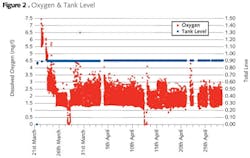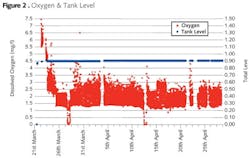By David Ruff
It is important to realize that the manufacturers of chemical metering pumps did not decide to offer pre-engineered metering pump systems simply to sell you more "stuff" that isn't really needed. Pre-engineered, factory built systems arose from a real need to provide a more robust dosing solution, benefiting everyone in the supply chain along the way.
By selecting a pre-engineered system you don't have to specify or customize every item. You simply select the flow and pressure requirements, piping material and single or multiple pumps and the manufacturer will do the rest. Many manufacturers can supply single pump systems, right through multiplex systems for multiple chemicals or lead/standby redundancy.
Chemical injection pumps, like a solenoid metering pump, require a few other common pieces of equipment to round out a robust injection system. Here are a few examples:
Rigid Piping with Unions: Available in a variety of materials like PVC, CPVC, PVDF and Stainless, you benefit from pressure tested joints, rigid mounting points, and union connections which allow for simplified component maintenance.
Inlet & Outlet Ball Valves: Allow for simplified connection to the rest of your system, easy change over from lead to standby, and quick isolation of the pump and equipment when the unexpected happens.
Suction Y-Strainer: Keeps debris from fouling the pump valves or the injector. A fouled injector is one of the leading causes of over pressurization, causing pump failure at best and in the worst case, a ruptured high pressure chemical line.
Calibration Column: A metering pump has a different flow rate based upon the pressure of the system that it is injecting into. You have absolutely no way of knowing the actual rate of chemical delivery unless you calibrate the pump flow at system pressure. The calibration column is a permanent part of the system so that you can re-adjust the pump any time a system parameter change occurs, or after servicing the pump or other equipment.
Pressure Relief Valve: The PRV diverts the high pressure pump flow back to the suction side if the discharge side pressure rises above the set point. When coupled with a flow verification device on the pump, you will get an alarm that no chemical is being delivered, even if everything appears normal.
Back Pressure Valve: This device maintains a consistent pressure against the pump, providing good reproducibility of the metered flow. It also prevents siphoning of chemical through the pump should the elevation or pressure of the chemical on the suction side surpass the level or pressure on the discharge side of the pump.
Pulsation Dampener: This device absorbs the pressure pulsation generated by the pump during the discharge stroke, and returns that flow and pressure to the system during the pump's suction stroke, resulting in uniform chemical flow. The dampener also greatly reduces vibration in the piping, preventing pipe joint fatigue and failure down the road.
Pressure Gauge with Chemical Isolator: A visual indication of the pressure developed by the injection system at all times. The isolator keeps the chemical out of the gauge for long service life.
Rigid Mounting Skid with Drip Basin: Designed for floor or wall mounting, all components are secured from damage and arranged for intuitive understanding of the process flow, as well as quick service later on. The drip basin collects any accidental discharge of chemical, from routine component maintenance to outright failure.
The economic considerations in selecting a pre-engineered dosing system are far more complex than a simple comparison of the price list of components versus the purchase price of the system. Especially when considering the cost of each component, the interconnecting piping, the assembly layout, pipe cutting, gluing, testing and leak repair.
Miscommunication (or simple misunderstanding) is far too common between system engineers, installing contractors and end users on chemical injection systems. It does not matter which function you perform in this business; specifying a pre-engineered skid in place of a laundry list of components will go a long way to protect you against an improperly functioning system. WW
About the Author: David Ruff is the Product Manager for the Standard Products Division of Pulsafeeder, Inc. and is located at company headquarters at Rochester, NY. He may be contacted at [email protected].Pulsafeeder is an exhibitor at the WEFTEC.10 event and can be found at Booth No. 6139
More WaterWorld Current Issue Articles
More WaterWorld Archives Issue Articles




